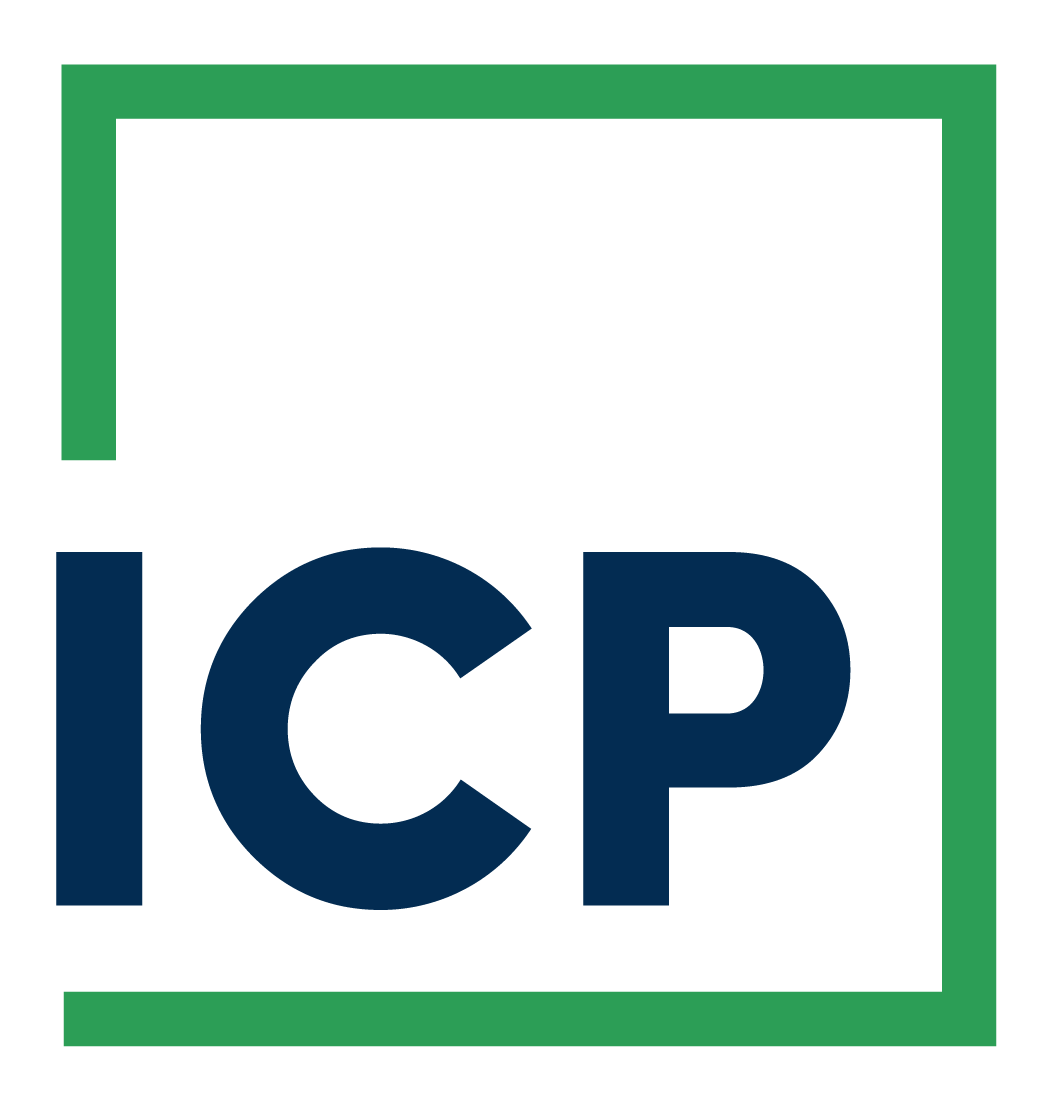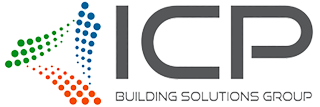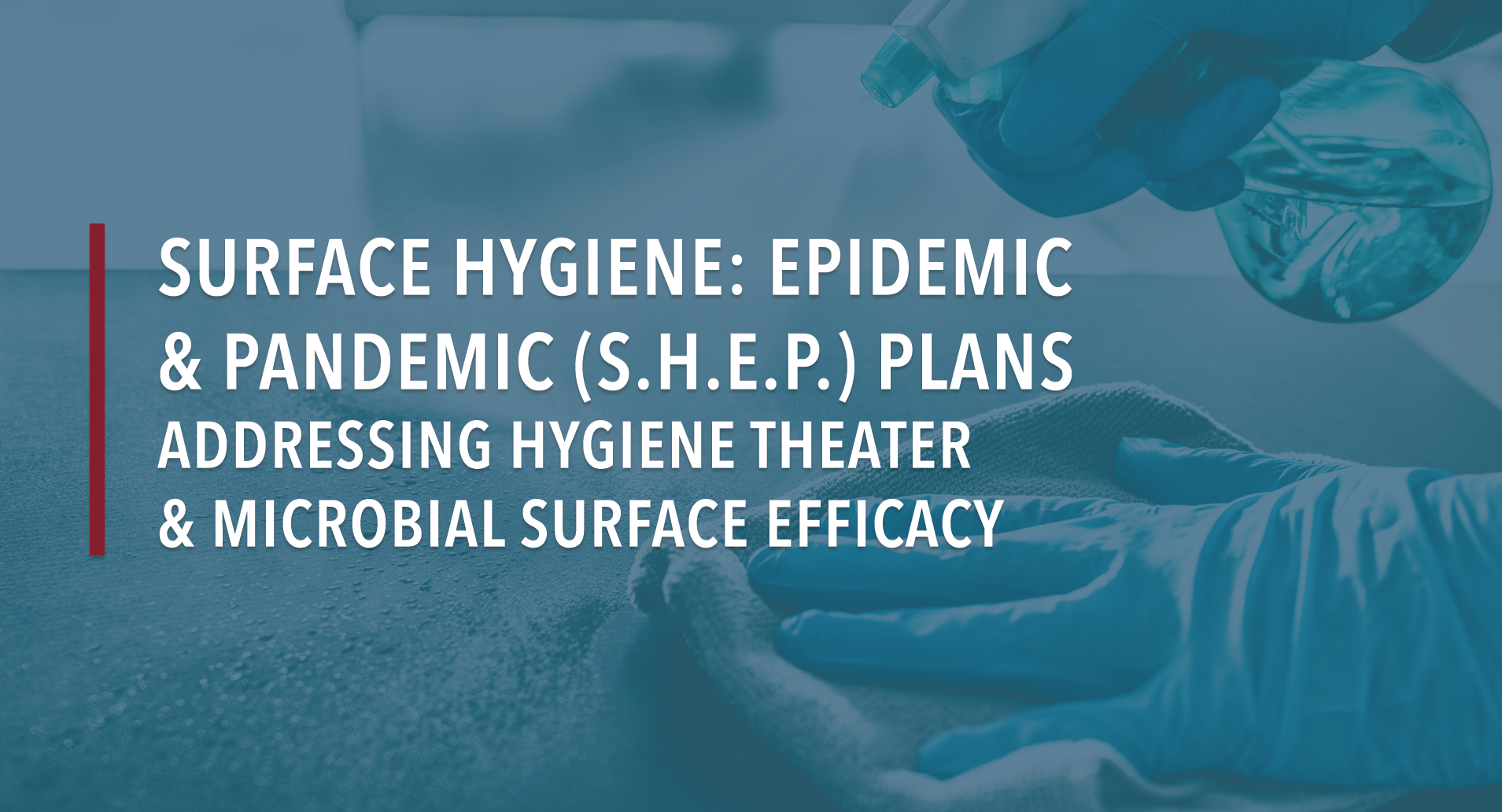Addressing Hygiene Theater & Microbial Surface Efficacy
Surface Hygiene: Epidemic & Pandemic (S.H.E.P.) Blog – Post 2 of 4
Blog Post 2 of a 4-part series. Click here to view Part 1: Protect Your People and Facilities: Before, During & Post-Pandemic.
Even though the SARS-CoV-2 (COVID-19) pandemic is stabilizing in some areas, with the threat of variant strains spreading (such as the Delta and Mu variants) and lack of herd immunity, there is still a very real need for ongoing surface cleaning and disinfection. The accusation that certain entities are engaging in highly visible “disinfection theater” is valid. Overproduced video of targetless spraying of undisclosed chemicals labeled as disinfectants or sanitizers into airplane cabins, hotel rooms, subways, and classrooms is not helpful. This type of activity, whether overzealous or designed for advertising purposes, is wasteful, potentially hazardous, and will not accomplish SARS-CoV-2 reduction on surfaces.
At ICP we have consistently maintained that disinfectants and antimicrobials are tools in the toolbox of our infection control programs we call S.H.E.P. (Surface Hygiene: Epidemic & Pandemic). Broadcast spraying and indiscriminate fogging are ineffective and inconsistent with both science and the restoration industry principles we have applied successfully to the goals of surface microbe reduction.
ICP has been providing COVID-19 education for more than 18 months (since our first MasterWorks webinar in March 2020) and more than 5,000 professionals from all walks of life that have attended – each learned from S.H.E.P. the same fundamental tenet of disinfection: when transmission in the community is high, and especially when an occupant may have been sick, then implementation of BOTH cleaning and disinfecting of high-traffic surfaces is a best practice. Moreover, whether in the present pandemic or looking ahead to when coronavirus has become an endemic management challenge, there is a role for disinfection as one of several tools in a layered mitigation strategy.
Public Health agencies have been unified in messaging that we need to deploy multiple related strategies, especially in community environments like schools, if our COVID-19 programs are to be successful. At ICP, we communicate and educate via SHEP that controlled and targeted surface disinfection is one valuable layer among our methods of mitigation.
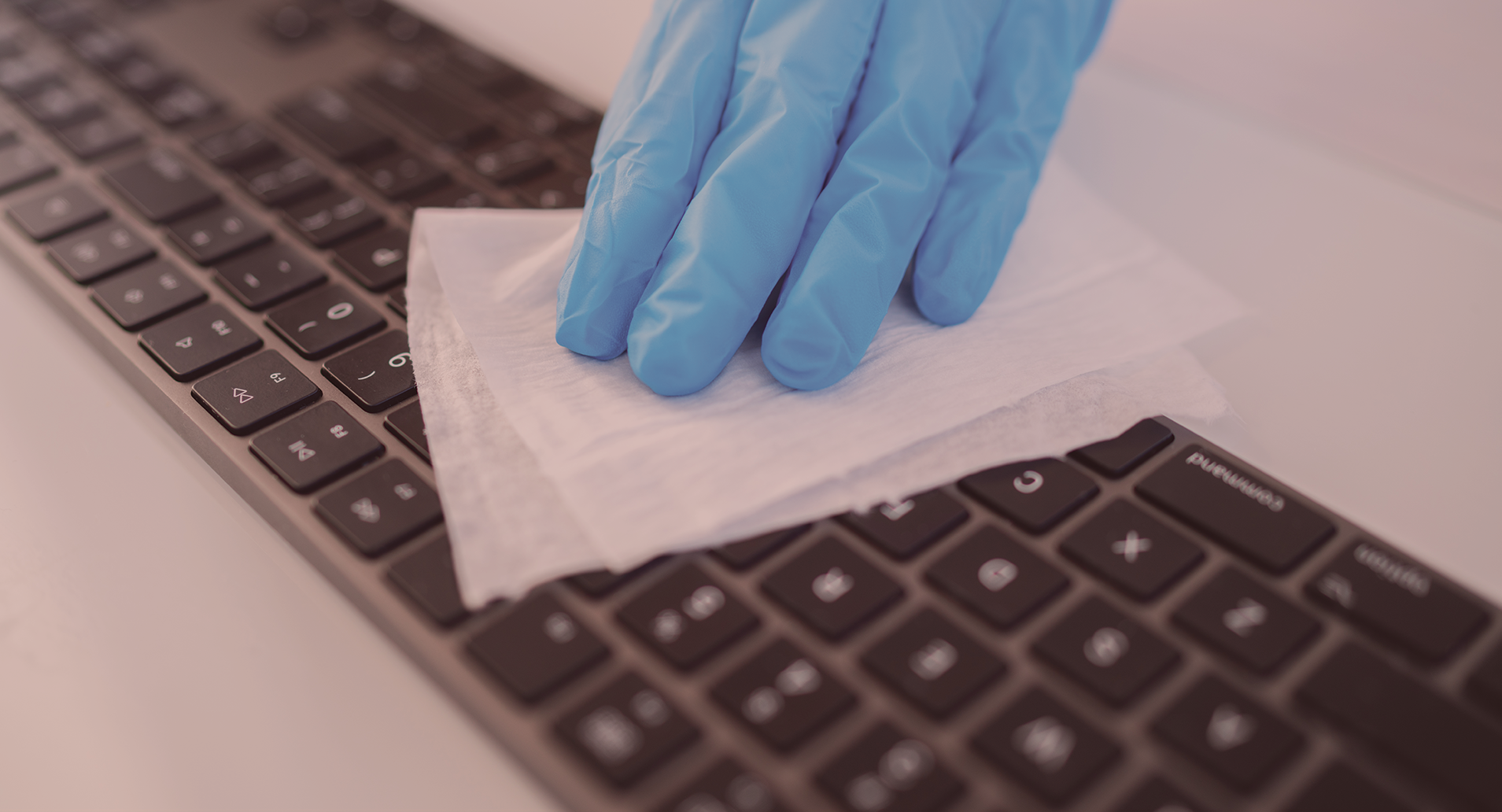
Layered Mitigation Strategy
There are many different types of microbes in our lives daily. Millions of different viruses, bacteria, and molds live and grow on surfaces and through these vectors can be transmitted to us. Many microbes last only a few hours on surfaces, but there are many potentially dangerous microbes that can live for months. Depending on the microbe and these microbes can cause life-threatening ailments that are often problematic and sometimes even fatal.
Microbial transmission involves different modes depending on the type of pathogen, for example a respiratory pathogen such as COVID-19, is usually airborne, whereas intestinal pathogens are typically spread through water or food. Microorganisms can be transmitted by more than one route, here is a list of the five main routes of transmission:
- direct contact – occurs through physical transfer through direct body contact with an infected individual. Entry occurs through mucous membranes, open wounds, or abraded skin
- fomites – surface transmission of infection, an infected individual contacts an inanimate object, then the microbes are transmitted through another non-infected individual touching the surface
- aerosol (airborne) – the transfer of pathogens via small particles or droplets. This transfer can occur when an infected individual breathes, coughs or sneezes in the vicinity of an uninfected individual
- oral (ingestion) – transfers through contaminated food or water. Occurs when a person eats or ingests contaminated food, water or by licking or chewing on contaminated surfaces
- vector borne – transfers through infected animals or insects to individuals. Occurs when an infected animal or insect such as a mosquito, flea/tick, or rodents bites an individual and passes on pathogen
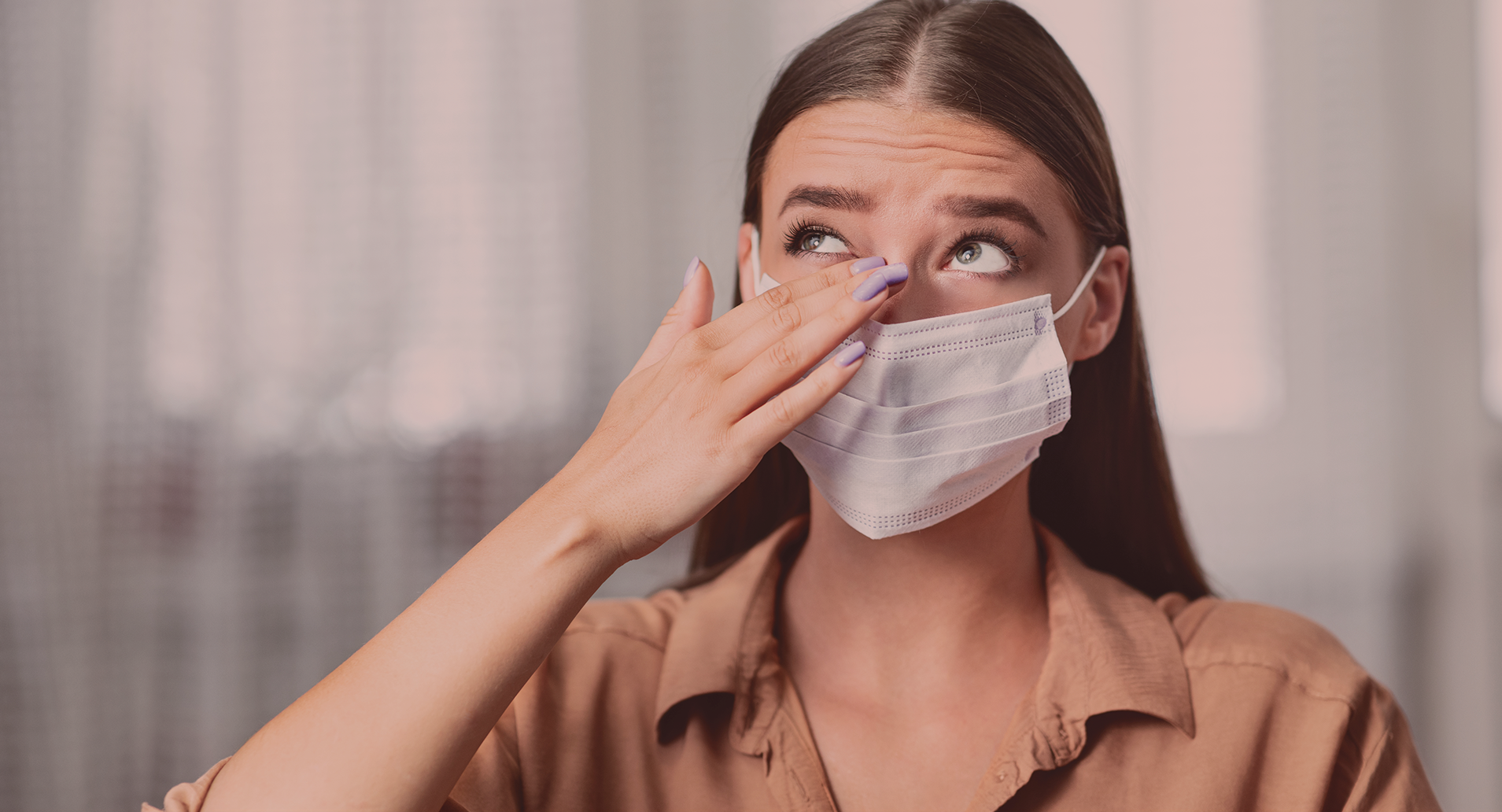
Microbial pathogens are a real threat on surfaces and should be considered when determining your company’s cleaning & disinfection plans including frequency of application. The CDC as of Fall 2021, is recommending for COVID-19 and other viruses that all touchable surfaces are to be cleaned at least once per day. They also suggest that “You may want to either clean more frequently or choose to disinfect (in addition to cleaning) in shared spaces if the space is a high traffic area or if certain conditions apply that can increase the risk of infection from touching surfaces:
- High transmission of COVID-19 in your community (As of early September 2021, close to 94% of US counties fall into the current high transmission category).
- Low vaccination rates in your community.
- Infrequent use of other prevention measures, such as mask wearing (among unvaccinated people) and hand hygiene; or
- The space is occupied by people at increased risk for severe illness from COVID-19.
If there has been a sick person or someone who tested positive for COVID-19 in your facility within the last 24 hours, you should clean AND disinfect the space.”
Overall, the best ways to mitigate and reduce the spread of COVID-19, is a layered mitigation strategy. This includes things such as masking where social distancing is not possible, practicing regular hand hygiene, implementing vaccination policies, social distancing as well as cleaning and disinfecting where applicable. With children back in the classrooms in most regions as well as businesses opening back up welcoming back staff and employees it is more important than ever to implement a Surface Hygiene, Epidemic and Pandemic Plans to address routine & targeted cleaning & disinfecting.
At ICP we have a Technical Bulletin entitled: Antimicrobial Disinfection Efficacy Matrix, to provide more guidance about various types of microbes, surface viability, how many cases in the USA of that infection annually, the etiology of each of the microbes listed and the approved disinfectant products we have for each of the outlined microbes. In many cases, microbes can be and are transmitted via surfaces, and so it is important to establish regular cleaning and disinfection plans to truly protect the built environment, during a pandemic and beyond.
In Part 3 of 4 of our S.H.E.P. blog series, coming soon, learn more about the suggested types of pandemic and surface hygiene plans and some ideas of how to build and implement these plans.
Resources
https://www.icpgroup.com/coronavirus-disinfection/
https://en.wikipedia.org/wiki/Hygiene_theater
https://www.cnn.com/2021/04/22/politics/what-matters-hygiene-theater/index.html
https://www.health.com/condition/infectious-diseases/coronavirus/hygiene-theater-cdc-cleaning-guidelines
https://www.theatlantic.com/ideas/archive/2021/04/end-hygiene-theater/618576/
https://www.scientificamerican.com/article/flu-has-disappeared-worldwide-during-the-covid-pandemic1/
https://www.cdc.gov/infectioncontrol/spread/index.html
https://microbiologysociety.org/why-microbiology-matters/what-is-microbiology/microbes-and-the-human-body/routes-of-transmission.html
https://www.aaha.org/aaha-guidelines/infection-control-configuration/routes-of-transmission/
